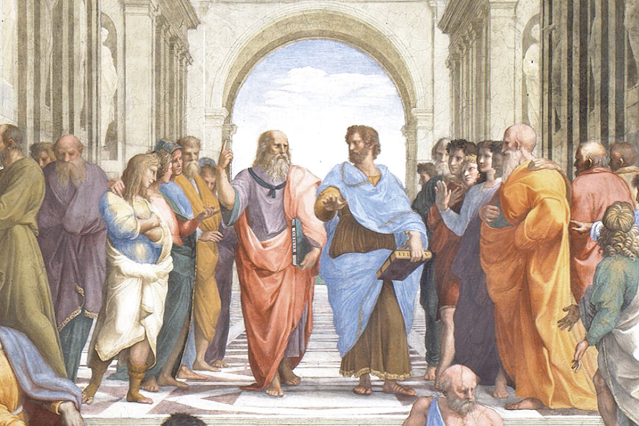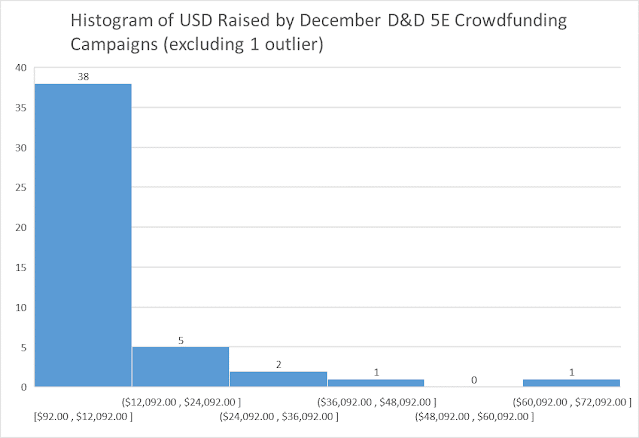ttrpgspider: Let’s jump right into it! I’m trying to think, I don’t remember when I even first saw the blog on tumblr, but can you tell me a little bit about when you had the idea for it, when you started it, what the whole timeline of it has been?
ttrpgbrackets: You know what, I can actually give you an exact day because I messaged a friend and said, “I have this idea.” Looks like it would’ve been late September when I came up with this idea. I started bouncing things around in my head, and I believe it was mid-October or so when I launched it because I know I started doing the polls in November.
For people who have no idea what this was, what was the TTRPG ability bracket? What was the point of it, what was the structure of it?
To be completely honest, I didn’t expect it to get the attention it did. Once the authors of the games involved started reblogging things, I was like: Whoa. It kinda spun out of the current tumblr zeitgeist of fun little popularity brackets. There are a million of them right now: best villain song in a musical, best duo, best little meow-meow who did nothing wrong. And then it hit me that I was seeing some about cartoons and video games but none about TTRPGs. So I started thinking, what would I like that bracket to be about?
And how did you decide on abilities specifically?
Part of it was that I wanted to submit something that wouldn’t have fit my original idea of “TTRPG classes.” When I was thinking about what I would submit, I really love a lot of games that don’t really have classes. And specifically, one of my favorite games I was thinking about was Exalted, which has some of the most insane abilities that I personally knew at the time. And I was like, I bet there are a million games out there like Exalted and I want to know more of those.
So how did you go about collecting submissions?
I submitted the first couple, just because once I made it I had five or six I wanted to throw in there. And then towards the end, submissions started to peter out and I realized I was about 8 short of another tier. So I did another 8 or 9 myself and the rest were submitted through a Google Form that I threw up when I started the bracket. It was just a post that said “Hey, here’s some guidelines on things I do and don’t want to see in here,” and a little bit of rules about how I was going to be selecting things if I did have to cut stuff. Mainly I had a rule that I didn’t want more than two abilities per game.
Beyond cutting - well, even with cutting the stuff from the popular games - how did you go about making decisions? Both which 2 abilities you kept in and how you decided on the brackets?
I’m going to be completely honest and say that I didn’t put that much thought into the seeding portion of it. Once I had the entries in, I just randomized the seed until nothing was going against itself in Round 1 and that was good enough for me. But as far as cutting things down, I didn’t have to do a lot of that. I think I only ended up cutting maybe 5 things total. I got 3 submissions from Pathfinder, and I got 12 different people submitting things for Lancer. But that was kinda easy because 8 of them submitted the same ability so that was a shoo-in.
Do you remember what ability that was?
Castigate the Enemies of the Godhead. It’s a Manticore ability where you basically declare “Until the end of the round if anything kills me I vaporize my mech and everything in a 30-yard radius.” Then there were two others where 3 or 4 people submitted each one. It was either Ushabti Omnigun or the other one that’s on the Pegasus, and for that one I just went with whatever was the most elegant or eloquent propaganda that was submitted with it.
Tell me a little bit more about the “propaganda,” which is such a funny way to talk about that.
Full disclosure, I follow a lot of these bracket-type things and most of them refer to any kind of - if anyone reblogs it with “hey, here’s why you should vote for this one,” they’ll reblog it and say “look, propaganda.” I felt like it was especially important for something rpg-related to have that aspect of it. Especially with indie TTRPG abilities, you might not understand what’s so cool about the ability if you don’t know the context of the game it’s from.
Yeah, I was scrolling through the blog and saw “Man with a Gun” from Spire, and it’s not just ‘a man with a gun comes into the room,’ it’s ‘you’re a pulp novelist wizard writing tropes into reality.’
Yeah, it gets you that context of “Oh, this is a weird thing.” You don’t just have a friend that shows up, you’re messing with reality.
Now I’m going to declare you a minor expert in minor TTRPG abilities -
Appreciate it.
- and as such what do you think (personally or based on observed voting trends) makes a good TTRPG ability?
At least in terms of what makes it interesting (as opposed to what makes it powerful), the ones that did the best were the ones that pushed the fiction forward the most. All of the ones that gave a +2 to doing something got buried out behind the shed very quickly. Most that made it past the second round did something special within the world of the game.
For example, there’s this Pathfinder ability that essentially lets you say, “Well I’m not a doctor but I’ve seen one on TV” and once a day you get to pick an ability from another class that you can use for the day. Like, “I may not be a barbarian but I can figure out how to rage.” And that ability made it to round 2 or 3.
The Omnigun from Lancer also made it pretty far, which is funny because it’s just a gun that automatically does one damage every turn. But it was the wording of the book that got it that far. Its gimmick is that it always deals one damage no matter what, armor-piercing, can’t be dodged, but there’s a line that a lot of people seemed to like. It ends with the line “This cannot be superseded by any ability in this or any future book.”
Yeah, it’s interesting because when I think about TTRPG abilities (and obviously not every game has them), I think about D&D, Pathfinder, Lancer, those kinda crunchy, trad, modular games. And yeah, they have so many abilities, but by that same logic they can’t be as interesting or impactful and, say, give someone something entirely new they couldn’t do before.
I think that’s why we got so many submissions from PBTA and Forged in the Dark games. You get three things to do in those games, so they all need to be really cool. There’s no room in the book for a +1.
You don’t advance very quickly or that much, and even when you do advance you don’t take that many new moves.
A lot of characters in those games are in their final form at the start of the game. You’ve already hit that fantasy!
A lot of indie games also emphasize shorter campaigns, they’re not assuming the big 4-year Lord of the Rings campaign. You sit down, you make characters, and you play one season of a TV show. With how much a lot of these games lean into genre, a lot of these moves are very much, “Yeah, this is a thing I’ve seen in that show before.” One of the moves that made it a little farther was Beam Saber, one of the more anime dramatic Gundam mecha rather than something super tactical, was an ability that gave you bonus dice if you reveal a dramatic secret to someone and immediately use it against them.
Having done this whole bracket, how important are abilities in terms of what you’re looking for in a game?
Personally, I love them. I enjoy a good Honey Heist, but I like looking through abilities and seeing what pushes my character in a specific way. They’re not necessarily required for a good game, but I find they do a lot in games with more mechanics or character options. Having these unique abilities, especially with newer players, helps them see what their character can be, what they can do. I’ve often found with newer players that introducing them into a game they’ve never played a lot of times the big question is “Ok, but what can I do? My character has 3 Strength and 2 Charisma, what does that mean?” Sometimes players like to have the direction of, “Oh, that’s what I do! That’s my thing!” Even something as simple as getting a +1 in a particular situation encourages you to put yourself in that situation, to build a character who would want to do that.
Alright, I think that basically wraps it up! Last question: what’s next for ttrpgbrackets?
Right now submissions are open for the TTRPG class bracket. Any kind of character archetypes or classes or suggested builds are an option. Depending on how many I get, that could take a couple of months, I like to leave them up for a while to get votes in. After that, I might go back to another round of abilities and just disqualify anything that made it past round 3 because I got a lot of message toward the end of people saying they would have submitted or voted for something. I’ve also thought about setting up something for board games because I’m a big fan of those and I think there’s a lot of crossover there.
__________________________________________________________________________
If you're interested in submitting something to the TTRPG Class Bracket, you can do so
here.









